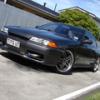Turbo Intake Pipe Length
Announcements
-
Similar Content
-
Latest Posts
-
Are you sure the gasket is blown? What are the issues? Thermocure is the only flush I've seen do anything with rust, very impressed with that, Prestone, rust will be by the pool having a cigarette.
-
And since the flush you have a blown head gasket? Have you lifted the head off yet?
-
The answer is to get a hold of the wiring diagram, work out what voltage is supposed to be where, when, and then work out why it is not there, then. I can't speak to the HR34 stuff, because I have never paid any attention to the NAs. There is a possibility that the turbo diagram will help, but it could also be different - depending on whether there is an FPCM on the NAs.
-
By Trinicandian · Posted
Hey guys. New here. I am having an issue with my hr34. The fuel pump isn't turning on. I removed it from the tank. Bench test it. Wasn't working. Order new one and installed it today. Still not turning on. Checked the relay. Relay has voltage on the contact side. I jumped it and it tuned the pump on. Which lead me to checked the coil voltage. Turned on the ignition and had my meter across the coil and there wasn't any dc voltage. Had my meter lead on the positive and I used the frame ground and noticed there was 12 volts. Which lead me to believe the relay isn't getting a negative signal. I traced the wire ( black with pink strip).it goes back to the bottom on the steering and it gets lost into the harness. I checked at the ecm and I can't seem to find that wire color. My question if any one knows is. Can I not just run the negative through a ignition relay to turn on the fuel pump relay?. Or anyone ever had this issue and if so how did u go about fixing it. -
So many people don't notice it, as batteries decay slowly over time. Two big reasons people end up noticing and needing to replace batteries: 1) The cold weather. The cold not only makes it harder to turn the engine for a few reasons, but it also increases the batteries internal resistance. So this means you need MORE power to turn a colder engine, AND the battery has a lower limit on how much current it can provide. 2) Something gets modified/altered/added in the wiring, typically an aftermarket accessory, like a dash camera, or an alarm etc, and this adds a small amount extra onto the battery, and pushes it over the edge in its failing days. But if you hadn't have read this thread, and just pushed through, chances are you might have made it through this winter, just. But come next winter, it would have been kapoot. But the fact you changed it out now, means you've instantly noticed how much nicer it is for starting, and will be less worry for you that the engine won't start now.
-







Recommended Posts
Create an account or sign in to comment
You need to be a member in order to leave a comment
Create an account
Sign up for a new account in our community. It's easy!
Register a new accountSign in
Already have an account? Sign in here.
Sign In Now